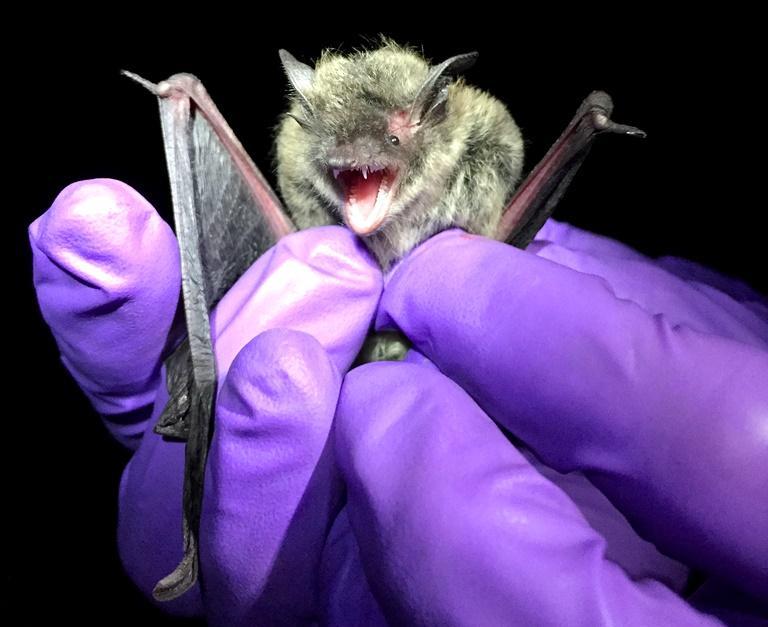A Question Of Risk: State Agency And Science Panel Disagree On Permit To Protect Bats

A little brown bat captured temporarily for research at a site in Addison County back in 2015. Little brown bats are one of five species that are threatened or endangered in Vermont. (Jane Lindholm/VPR File)
The Fish and Wildlife Department and a state science advisory panel disagree over how to protect endangered bats in Vermont from a large-scale pesticide spraying program.
Bats are not doing well here. They’ve been ravaged for years by a fungal disease known as White-Nose Syndrome, which has killed more than 5 million bats in the Northeast and Canada since 2006. Five bat species found in Vermont are listed as threatened or endangered.
The state endangered species committee – made up of six prominent scientists – now says the state needs to do more to protect these five species from pesticide exposure in Addison and Rutland counties.
The committee says a local municipal spraying program needs a state endangered species permit to limit its impact on bats.
The committee outlined its reasoning in a memo to Natural Resources Secretary Julie Moore, concluding that the “statute sets a high bar for requiring an incidental takings permit and the evidence in this case exceeds that threshold.”
Read the rest of the story at VPR’s website.
